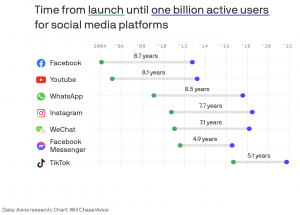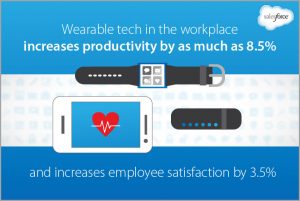In a post-Covid-19, digital-first world, organizations need to have efficiency, operational agility, and efficacy to defeat their competition, reduce resource shortages, and exceed evolving employee and customer expectations. However, many companies do not epitomize these qualities as they use a mixture of technologies that are not connected, lean, clean, or optimized for their business outcomes.
Hyperautomation changes this as it helps companies automate workflows to reduce costs, human error, and time to create a more efficient way of working. Additionally, hyperautomation can also improve a business’s ability to make faster, more informed decisions and improve customer and employee relationships.
What Is Hyperautomation?
While many businesses currently use automation in some form, their usage only simplifies and streamlines specific isolated tasks. On the other hand, hyperautomation is a unified approach that utilizes a combination of processes, approaches, and techniques that adopts automation technologies like robotic process automation (RPA), natural language processing (NLP), artificial intelligence (AI), and machine learning (ML). Then, companies can use the best combination of these tools to create a seamless selection of automated tasks across a business.
Hyperautomation goes beyond simply using technology to automate simple tasks; it helps organizations understand the most efficient way for completing tasks that benefit the whole business. As research highlights that this software market will be worth $ 596.6 billion by 2022, it is essential to understand how hyperautomation can change business.
Encourages Use Of A Digital Twin To Understand The Present And Future Of Your Business
Evolving customer demands and continual market disruptions mean that a product manufacturer can no longer depend solely on forecasting models and economies of scale to drive a profitable business. Instead, to remain agile in today’s market, companies will benefit from constructing a digital twin, a virtual replica, or simulation of an organization itself or its physical assets.
When modeled on a trusted, comprehensive and compatible source of real-time data, a digital twin can help companies streamline operations, detect and prevent errors, and allows the opportunity to continually adjust strategies and designs in line with customer and business outcomes. In this way, a digital twin can also provide you with a new way of understanding and running your business, especially since companies can integrate them with other forms of technology such as AI, ML, and analytics.
More importantly, a digital twin can act as a risk-free platform to test “what-if” scenarios and explore strategies for predicting issues before they take place. For example, GE Aviation Digital Group used Microsoft’s Azure Digital Twin solution to construct a virtual model of an aircraft using two data sources. The first data source looks at how an aircraft is maintained on the ground, while the second indicates how they perform in the air. Before building this virtual twin, employees had the time-consuming task of reviewing an aircraft’s efficiency, safety, and performance using these two siloed data sources. By using Microsoft hyperautomation solutions, GE Aviation could integrate both data sources into a real-time model that offered an evolving view of each customer’s aircraft.
In this way, each customer has access to a digital twin of their aircraft that offers a real-time and historical maintenance record of every component and physical asset in their plane. It follows that each customer can proactively identify any repairs or changes, predict any problems before they arise, and improve the understanding of the status and condition of their aircraft. This virtual model lowers the cost of checking an aircraft manually and reduces unpredictable out-of-service time.
Helps Strike A Balance Between Lowering Costs And Improving Customer Experience
In addition to scaling and improving your processes, hyperautomation can also represent a way to innovate the customer experience. For instance, by using NLP, AI, and ML technologies, businesses can create bots to automate simple customer-focused tasks such as helping users order products or navigate support articles. At the same time, these bots could gather real-time insight and feedback about these customers. Human agents can then use these insights to solve complex problems and drive a more personable customer experience.
For example, the Bank of America’s AI virtual assistant Erica initially helped its customers perform simple tasks such as checking balances, reminding them about bill payments and providing answers to their initial banking queries. Following this, Bank of America expanded the capabilities of Erica by providing a customer with personalized recommendations that encouraged them to manage their money better. Additionally, once Covid-19 began, Erica could also respond to pandemic-related queries, resulting in more customers using the app. As a result, Erica continually met a customer’s needs and unburdened the bank’s employees. The virtual assistant did this by reducing the need for a human agent to respond to every query, so agents can then devote more time to delivering exceptional experiences.
As Erica gains more abilities to deal with complex queries, Bank of America could enforce a hybrid approach that delivers a better customer experience. This approach could see Erica working alongside human representatives so that customers could still access human agents for a more personal touch.
Empowers Employees To Solve Problems With Technology
Traditionally, IT departments work in siloes when investigating the needs of an organization which means that they roll out tools without consulting that the rest of the business. Hyperautomation allows the employees who are closest to everyday business problems to be trained on how advanced technologies can be used to capture or develop a customized solution for a user’s needs. In this way, employees can use hyperautomation to free themselves from manual, time-consuming processes to spend more time delivering the experiences they want their customers to have. It also means that IT can be left alone to focus on large-scale programs without needing to get bogged down by small customer-focused projects.
For instance, after running a successful pilot with 22 employees, pharmaceutical company Takeda planned to empower more staff to build and use software bots themselves so that they could improve patient outcomes on their own. This goal of training around 2,000 full-time workers boosts productivity as the bots can speed up drug discovery and get patients through their processes quicker. This training exercise shows that Takeda is passionate about empowering their employees to solve problems through technology, which circumvents a skills gap and makes sure that they are growing the right talent for their company.
Hyperautomation can change the way you do business as it can provide you with the opportunity for higher margins, lower costs, more efficiency, and a faster time to market for new products. But, more importantly, hyperautomation can also accelerate the human aspect of your company by allowing the delivery of more meaningful employee and customer experiences.
Business & Finance Articles on Business 2 Community
(38)








